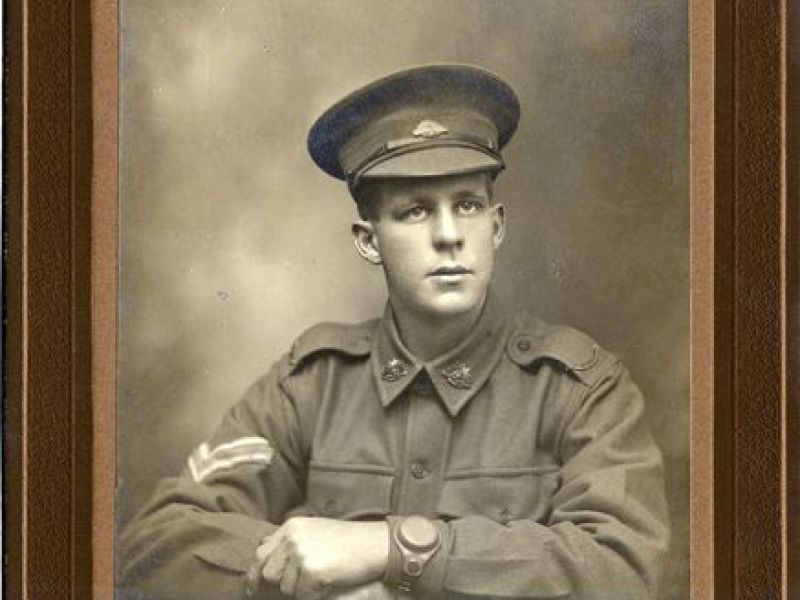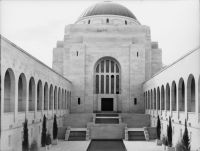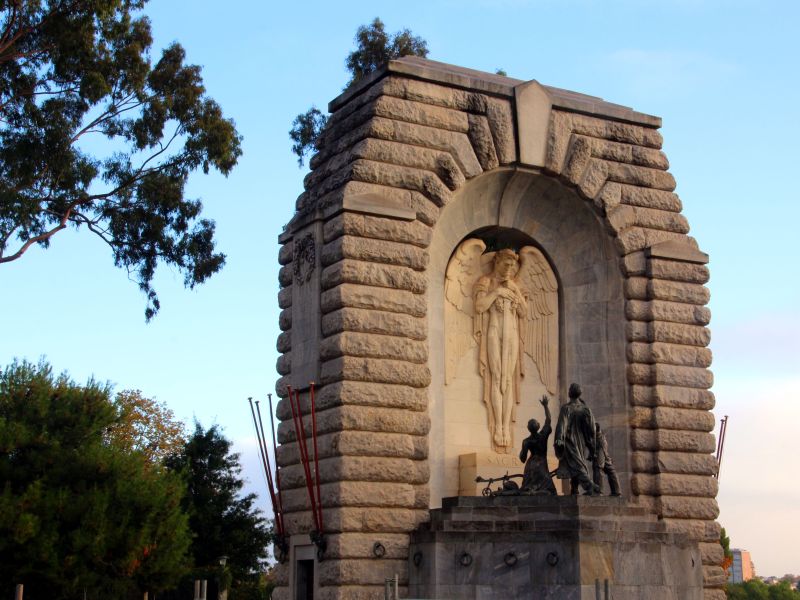Private Albert Percival Adcock, 50th Battalion, AIF
Albert Adcock was born in the Adelaide suburb of Wayville on 26 of November 1896, the youngest son of Thomas and Elizabeth Adcock. His father was the minister at the Wayville Baptist Church, which he had been instrumental in building, and would spend many of Albert’s childhood years working as secretary of the South Australian Temperance Alliance and Reform Bureau. Albert was educated at the Hindmarsh Public School, and went on to work as a clerk. After a number of years working for D & J Fowler, merchants, he became an assistant cashier at the Electrical Supply Company. Having taken his parents’ faith as his own, Albert also worked as a teacher in the Hindmarsh Baptist Sunday School. He was described as being “greatly loved for his cheerful and manly bearing.
Albert Adcock wanted to enlist in the Australian Imperial Force early in the war, but his parents insisted that he wait until he was at least 19 years old. He finally enlisted on 14 February 1916 and went into camp at Mitcham to begin his training. He left Adelaide on board the troopship Aeneas with reinforcements to the 50th Battalion on the 11th of April 1917.
Private Adcock was first sent to England where he continued training on the Salisbury Plain. During his training he was promoted to corporal, and passed courses for non-commissioned officers, and in musketry at Tidworth barracks in the months after his arrival. Despite the fact that he “secured good marks” in these courses, Adcock reverted to ranks on his departure for France, joining the 50th Battalion on the battlefields of the Western Front in mid-December 1916.
Private Adcock joined his battalion just after the onset of one of the coldest winters northern France had recorded. He remained with the 50th as it spent weeks rotating in and out of the front line in freezing conditions. In the new year, the German Army began withdrawing to a strongly fortified position that would become known as the Hindenburg Line. The 50th Battalion was involved in following the withdrawal.
On 2 April 1917 the 50th Battalion took part in an operation to capture an outpost to the Hindenburg Line – the French village of Noreuil. The 50th advanced on the village from the south, encountering heavy enemy machine- gun fire as they went. The village of Noreuil was captured, but at a heavy cost.
The 50th Battalion suffered more than 350 casualties – more than a third of its strength – during the attack. One of the more than 100 men killed was Private Percy Adcock, fighting in his first offensive operation of the war. Little is known of the manner of his death, although it is likely to be the result of the heavy machine- gun fire coming from the village of Noreuil during the attack.
Private Albert Adcock was buried not far from where he fell in a small cemetery with other casualties from the battle. In later years the cemetery would be obliterated in other fighting, and his grave was lost. Today he is commemorated on a special memorial in the Noreuil Australian Cemetery under the epitaph “a faithful soldier of Christ and country”. He was 20 years old.
In Australia the Adcock family were dealing with the serious illness of Albert’s oldest sister Eva Tucker when he died. She died five days after her brother, the family receiving the news of Albert’s death around the same time. Albert and his sister were commemorated together on a family headstone in the Hindmarsh cemetery, on the plot that would become their parents’ graves.
One year after Albert Adcock’s death his family put a memorial notice in the Adelaide Chronicle. In the notice they included an excerpt from Albert’s last letter home, written shortly before entering battle at Noreuil. He wrote, “I am trusting God to help me through this battle, but if He wishes otherwise, I am still trusting.” The notice concludes: “Thus another brave Australian has passed from the strife of battle to the peace of God.”
- AWM Roll of Honour https://www.awm.gov.au/collection/R1730384

 Australian War Memorial
Australian War Memorial